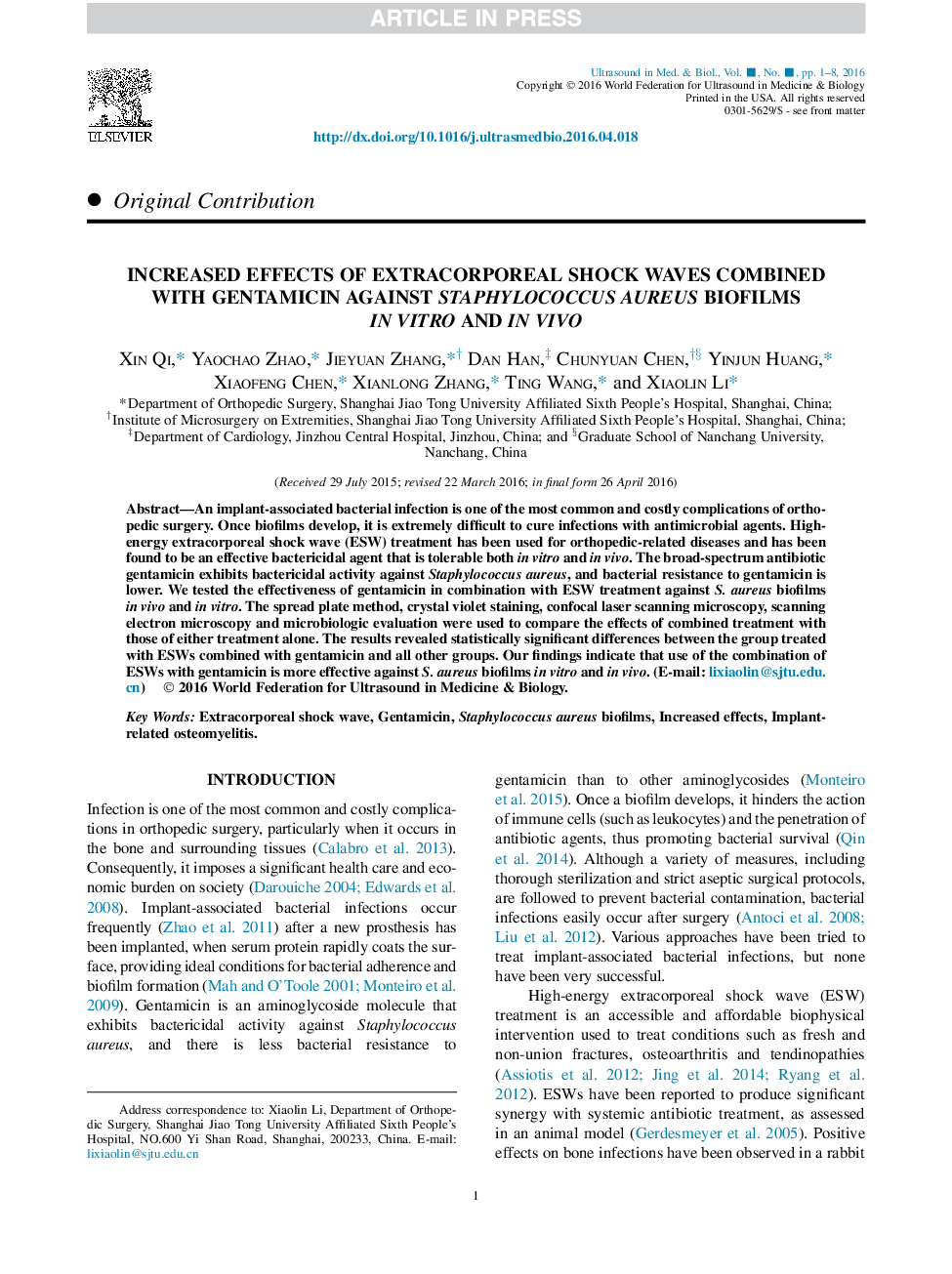| Article ID | Journal | Published Year | Pages | File Type |
|---|---|---|---|---|
| 10691059 | Ultrasound in Medicine & Biology | 2016 | 8 Pages |
Abstract
An implant-associated bacterial infection is one of the most common and costly complications of orthopedic surgery. Once biofilms develop, it is extremely difficult to cure infections with antimicrobial agents. High-energy extracorporeal shock wave (ESW) treatment has been used for orthopedic-related diseases and has been found to be an effective bactericidal agent that is tolerable both in vitro and in vivo. The broad-spectrum antibiotic gentamicin exhibits bactericidal activity against Staphylococcus aureus, and bacterial resistance to gentamicin is lower. We tested the effectiveness of gentamicin in combination with ESW treatment against S. aureus biofilms in vivo and in vitro. The spread plate method, crystal violet staining, confocal laser scanning microscopy, scanning electron microscopy and microbiologic evaluation were used to compare the effects of combined treatment with those of either treatment alone. The results revealed statistically significant differences between the group treated with ESWs combined with gentamicin and all other groups. Our findings indicate that use of the combination of ESWs with gentamicin is more effective against S. aureus biofilms in vitro and in vivo.
Keywords
Related Topics
Physical Sciences and Engineering
Physics and Astronomy
Acoustics and Ultrasonics
Authors
Xin Qi, Yaochao Zhao, Jieyuan Zhang, Dan Han, Chunyuan Chen, Yinjun Huang, Xiaofeng Chen, Xianlong Zhang, Ting Wang, Xiaolin Li,
